Hans Moravec
description: an Austrian-born roboticist and futurist known for his work on robotics, artificial intelligence, and writings on the future of non-biological intelligence.
63 results

The Singularity Is Near: When Humans Transcend Biology
by
Ray Kurzweil
Published 14 Jul 2005
Ray Kurzweil, The Age of Intelligent Machines (Cambridge, Mass.: MIT Press, 1989). 21. Hans Moravec, Mind Children: The Future of Robot and Human Intelligence (Cambridge, Mass.: Harvard University Press, 1988). 22. Vernor Vinge, "The Coming Technological Singularity: How to Survive in the Post-Human Era," VISION-21 Symposium, sponsored by the NASA Lewis Research Center and the Ohio Aerospace Institute, March 1993. The text is available at http://www.KurzweiW.net/vingesing. 23. Ray Kurzweil, The Age of Spiritual Machines: When Computers Exceed Human Intelligence (New York: Viking, 1999). 24. Hans Moravec, Robot: Mere Machine to Transcendent Mind (New York: Oxford University Press, 1999). 25.
…
International Technology Roadmap for Semiconductors, 2002 update, International Sematech. 35. "25 Years of Computer History," http://www.compros.com/timeline.html; Linley Gwennap, "Birth of a Chip," BYTE (December 1996), http://www.byte.com/art/9612/sec6/art2.htm; "The CDC 6000 Series Computer," http://www.moorecad.com/standardpascal/cdc6400.html; "A Chronology of Computer History," http://www.cyberstreet.comlhcs/museum/chron.htm; Mark Brader, "A Chronology of Digital Computing Machines (to 1952)," http://www.davros.org/misc/chronology.html; Karl Kempf, "Electronic Computers Within the Ordnance Corps," November 1961, http://ftp.arl.mil/~mike/comphist/61ordnance/index.html; Ken Polsson, "Chronology of Personal Computers," http://www.islandnet.com/~kpolsson/comphist; "The History of Computing at Los Alamos," http://bang.lanl.gov/video/sunedu/computer/comphist.html (requires password); the Machine Room, http://www.machine-room.org; Mind Machine Web Museum, http://www.userwww.sfsu.edu/~hl/mmm.html; Hans Moravec, computer data, http://www.frc.ri.cmu.edu/~hpm/book97/ch3/processor.list; "PC Magazine Online: Fifteen Years of PC Magazine," http://www.pcmag.com/article2/0,1759,23390,00.asp; Stan Augarten, Bit by Bit: An Illustrated History of Computers (New York: Ticknor and Fields, 1984); International Association of Electrical and Electronics Engineers (IEEE), Annals of the History of the Computer 9.2 (1987): 150–53 and 16.3 (1994): 20; Hans Moravec, Mind Children: The Future of Robot and Human Intelligence (Cambridge, Mass.: Harvard University Press, 1988); Rene Moreau, The Computer Comes of Age (Cambridge, Mass.: MIT Press, 1984). 36.
…
Searle, "I Married a Computer," in Richards et al., Are We Spiritual Machines? 36. John R. Searle, The Rediscovery of the Mind (Cambridge, Mass.: MIT Press, 1992). 37. Hans Moravec, Letter to the Editor, New York Review of Books, http://www.kurzweiltech.com/Searle/searle_response_letter.htm. 38. John Searle to Ray Kurzweil, December 15, 1998. 39. Lanier, "One Half of a Manifesto." 40. David Brooks, "Good News About Poverty," New York Times November 27, 2004, A35. 41. Hans Moravec, Letter to the Editor, New York Review of Books, http://www.kurzweiltech.com/Searle/searle_response_letter.htm. 42. Patrick Moore, "The Battle for Biotech Progress—GM Crops Are Good for the Environment and Human Welfare," Greenspirit (February 2004), http://www.greenspirit.com/logbook.cfm?

Machines of Loving Grace: The Quest for Common Ground Between Humans and Robots
by
John Markoff
Published 24 Aug 2015
“The Dynabook of Alan Kay,” History of Computers, http://history-computer.com/ModernComputer/Personal/Dynabook.html. 28.Robert Geraci, Apocalyptic AI: Visions of Heaven in Robotics, Artificial Intelligence, and Virtual Reality, reprint edition (New York: Oxford University Press, 2012), 2. 29.John Markoff, “John McCarthy, 84, Dies; Computer Design Pioneer,” New York Times, http://www.nytimes.com/2011/10/26/science/26mccarthy.html?pagewanted=all. 30.Hans Moravec, “Today’s Computers, Intelligent Machines and Our Future,” Stanford University, July 21, 1976, http://www.frc.ri.cmu.edu/~hpm/project.archive/general.articles/1978/analog.1978.html. 31.Hans Moravec, “The Role of Raw Power in Intelligence,” May 12, 1976, http://www.frc.ri.cmu.edu/~hpm/project.archive/general.articles/1975/Raw.Power.html. 32.Moravec, “Today’s Computers, Intelligent Machines and Our Future.” 33.Markoff, What the Dormouse Said. 34.Les Earnest, “Stanford Cart,” December 2012, http://www.stan ford.edu/~learnest/cart.htm. 35.Ibid. 36.Sheldon Breiner, “The Background Behind the First Airport Gun Detector,” http://breiner.com/sheldon/papers/First%20Gun%20Detector%20for%20Airport--Public%20Security.pdf. 37.Robert Reinhold, “Reasoning Ability of Experts Is Codified for Computer Use,” New York Times, March 29, 1984. 38.Jonathan Grudin, “AI and HCI: Two Fields Divided by a Common Focus,” AI Magazine, Winter 2009, http://research.microsoft.com/apps/pubs/default.aspx?
…
Early work in machine vision and robotics began at SAIL, and the laboratory was indisputably the birthplace of speech recognition. McCarthy gave Raj Reddy his thesis topic on speech understanding, and Reddy went on to become the seminal researcher in the field. Mobile robots, paralleling Shakey at Stanford Research Institute, would be pursued at SAIL by researchers like Hans Moravec and later Rodney Brooks, both of whom became pioneering robotics researchers at Carnegie Mellon and MIT, respectively. It proved to be the first golden era of AI, with research on natural language understanding, computer music, expert systems, and video games like Spacewar. Kenneth Colby, a psychiatrist, even worked on a refined version of Eliza, the online conversation system originally developed by Joseph Weizenbaum at MIT.
…
For others at SAIL, however, the vision was clear: machines would soon match and even replace humans. They were the coolest things around and in the future they would meet and then exceed the capabilities of their human designers. You must drive several miles from the Carnegie Mellon University campus to reach a pleasantly obscure Pittsburgh residential neighborhood to find Hans Moravec. His office is tucked away in a tiny apartment at the top of a flight of stairs around the corner from a small shopping street. Inside, Moravec, who retains his childhood Austrian accent, has converted a two-room apartment into a hideaway office where he can concentrate without interruption. The apartment opens into a cramped sitting room housing a small refrigerator.

The Singularity Is Nearer: When We Merge with AI
by
Ray Kurzweil
Published 25 Jun 2024
Additional RESOURCES Anders Sandberg and Nick Bostrom, Whole Brain Emulation: A Roadmap, technical report 2008-3, Future of Humanity Institute, Oxford University (2008), https://www.fhi.ox.ac.uk/brain-emulation-roadmap-report.pdf. William D. Nordhaus, “The Progress of Computing,” discussion paper 1324, Cowles Foundation (September 2001), https://ssrn.com/abstract=285168. Hans Moravec, “MIPS Equivalents,” Field Robotics Center, Carnegie Mellon Robotics Institute, accessed December 2, 2021, https://web.archive.org/web/20210609052024/https://frc.ri.cmu.edu/~hpm/book97/ch3/processor.list. Hans Moravec, Mind Children: The Future of Robot and Human Intelligence (Cambridge, MA: Harvard University Press, 1988). Listed Machines, Data, and Sources CPI data sources “Consumer Price Index, 1913–,” Federal Reserve Bank of Minneapolis, accessed April 20, 2023, https://www.minneapolisfed.org/about-us/monetary-policy/inflation-calculator/consumer-price-index-1913-; US Bureau of Labor Statistics, “Consumer Price Index for All Urban Consumers: All Items in U.S.
…
A range of further research over the past two decades has shown that neurons fire orders of magnitude more slowly—not two hundred times a second, which is around their theoretical maximum, but closer to once a second.[144] In fact, the AI Impacts project estimated, based on the brain’s energy consumption, that the average neuron fires only 0.29 times per second—implying that total brain computation could be as low as around 1013 operations per second.[145] This matches Hans Moravec’s seminal estimate, in his 1988 book Mind Children: The Future of Robot and Human Intelligence, which used a totally different methodology.[146] This still assumes that every neuron is necessary for working human cognition, which we know isn’t true. There is a large (but still poorly understood) degree of parallelism in the brain, with individual neurons or cortical modules doing redundant work (or work that at least could be duplicated elsewhere).
…
Replicant bodies will exist mostly in virtual and augmented reality, but realistic bodies in actual reality (that is, convincing androids) will also be possible using the nanotechnology of the late 2030s. Progress in this direction is still in very early stages as of 2023, but there is already significant research going on that will lay the groundwork for much bigger breakthroughs during the next decade. When it comes to android function, technological progress faces a challenge my friend Hans Moravec identified several decades ago, now called Moravec’s paradox.[84] In short, mental tasks that seem hard to humans—like square-rooting large numbers and remembering large amounts of information—are comparatively easy for computers. Conversely, mental tasks that are effortless to humans—like recognizing a face or keeping one’s balance while walking—are much more difficult for AI.

The Transhumanist Reader
by
Max More
and
Natasha Vita-More
Published 4 Mar 2013
Eric Drexler “The Agoric Papers” (The Ecology of Computation, Elsevier Science, 1988); and Robust Composition: Towards A Unified Approach to Access Control and Concurrency Control (PhD dissertation, 2006). Marvin Minsky, PhD, is co-founder MIT AI Laboratory. He authored The Society of Mind (Simon & Schuster, 1988); and The Emotion Machine: Commonsense Thinking, Artificial Intelligence, and the Future of the Human Mind (Simon & Schuster, 2007). Hans Moravec, PhD, is Research Professor at Robotics Institute, Carnegie Mellon University. He authored Robot: Mere Machine to Transcendent Mind (Oxford University Press, 2000); and Mind Children: The Future of Robot and Human Intelligence (Harvard University Press, 1990). Max More, PhD, is President of Alcor Life Extension Foundation and Co-Editor of The Transhumanist Reader.
…
Although humans have always lived their lives entirely in the physical world as revealed by the unmediated senses, we may come to spend much of our time in simulated environments, or in “real” environments with virtual overlays. Simulated worlds raise questions about what we value. For instance, we do value the experience of achieving something or actually achieving it, and how clear is the distinction (Nozick 1974)? Taking this line of thinking further, transhumanists from Hans Moravec to Nick Bostrom have asked how likely it is that we are already living in a simulation (Moravec 1989; Bostrom 2003). An obvious metaphysical question to raise here is the compatibility or otherwise of religion and transhumanism. In my 1990 essay that first set forth modern transhumanism as a distinct philosophy under that name, I explained how transhumanism (like humanism) can act as a philosophy of life that fulfills some of the same functions as a religion without any appeal to a higher power, a supernatural entity, to faith, and without the other core features of religions (More 1990).
…
Because this thesis suggests human enhancement and the explicit pursuit of life expansion stems from cybernetics, and especially second-order cybernetics, and the cyborg has a relationship with the transhuman, what is being and nonbeing and what creates and is created is significant from a philosophical perspective. 11 This project resulted through the collaborative advice of Drs. Robert Freitas, Michael Rose, Greg Fahy, Marvin Minsky, Roy Walford, Max More, Robin Hanson, Vernor Vinge, Hans Moravec, and Gregory Benford. 12 In this essay, the desire for technological enhancement relates to proponents of human enhancement, which include those who seek to resolve physical damage due to injury and disease (therapeutic enhancement) and those who seek to append human physiological and cognitive abilities (what this study refers to as alternative enhancement), including extending the human lifespan and expanding agency onto semi- and non-biological platforms and/or substrates. 13 Human enhancement technologies include genetic engineering, nanomedicine, and artificial intelligence, what this study refers to as the “biotechnogenesis.” 14 In the last chapter of The Human Use of Human Beings, Wiener discusses “semi-medical purposes for the prosthesis and replacement of human functions which have been lost or weakened” in certain people (Wiener 1949: 163).

The Second Machine Age: Work, Progress, and Prosperity in a Time of Brilliant Technologies
by
Erik Brynjolfsson
and
Andrew McAfee
Published 20 Jan 2014
Labor Market,” Brookings Institution (April 2010), http://www.brookings.edu/research/papers/2010/04/jobs-autor (accessed August 10, 2013); and Daron Acemoglu and David Autor, “Skills, Tasks and Technologies: Implications for Employment and Earnings,” Working Paper (National Bureau of Economic Research, June 2010), http://www.nber.org/papers/w16082. 26. See N. Jaimovich and H. E. Siu, “The Trend is the Cycle: Job Polarization and Jobless Recoveries (No. w18334),” National Bureau of Economic Research, 2012. 27. As Hans Moravec put it, “it is comparatively easy to make computers exhibit adult level performance on intelligence tests or playing checkers, and difficult or impossible to give them the skills of a one-year-old when it comes to perception and mobility.” Hans Moravec, Mind Children: The Future of Robot and Human Intelligence (Cambridge, MA: Harvard University Press, 1988). 28. See chapter 6 in Jonathan Schaeffer, One Jump Ahead: Computer Perfection at Checkers (New York: Springer, 2009), http://public.eblib.com/EBLPublic/PublicView.do?
…
On the third step, the robot’s knees buckled and it fell over backward, smashing its faceplate on the floor.26 ASIMO has since recovered and demonstrated skills like walking up and down stairs, kicking a soccer ball, and dancing, but its shortcomings highlight a broad truth: a lot of the things humans find easy and natural to do in the physical world have been remarkably difficult for robots to master. As the roboticist Hans Moravec has observed, “It is comparatively easy to make computers exhibit adult-level performance on intelligence tests or playing checkers, and difficult or impossible to give them the skills of a one-year-old when it comes to perception and mobility.”27 This situation has come to be known as Moravec’s paradox, nicely summarized by Wikipedia as “the discovery by artificial intelligence and robotics researchers that, contrary to traditional assumptions, high-level reasoning requires very little computation, but low-level sensorimotor skills require enormous computational resources.”28* Moravec’s insight is broadly accurate, and important.
…
“Isaac Asimov Explains His Three Laws of Robots,” Open Culture, October 31, 2012, http://www.openculture.com/2012/10/isaac_asimov_explains_his_three_laws_of_robotics.html (accessed June 23, 2013). 26. Brian Lam, “Honda ASIMO vs. Slippery Stairs,” December 11, 2006, http://giz modo.com/220771/honda-asimo-vs-slippery-stairs?op=showcustomobject&pos tId=220771&item=0. 27. Hans Moravec, Mind Children: The Future of Robot and Human Intelligence (Cambridge, MA: Harvard University Press, 1988), p. 15. 28. “Moravec’s Paradox,” Wikipedia, the Free Encyclopedia, April 28, 2013, http://en.wiki pedia.org/w/index.php?title=Moravecpercent27s_paradox&oldid=540679203. 29. Steven Pinker, The Language Instinct (New York: HarperPerennial ModernClassics, 2007), p. 190–91. 30.
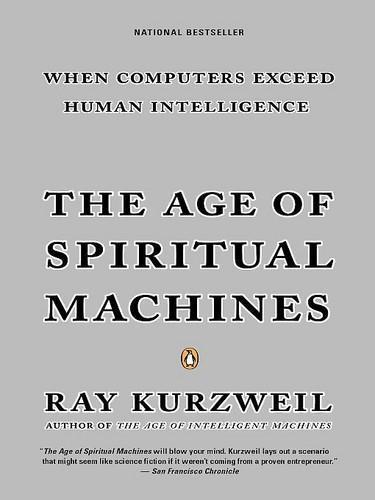
The Age of Spiritual Machines: When Computers Exceed Human Intelligence
by
Ray Kurzweil
Published 31 Dec 1998
International Association of Electrical and Electronics Engineers (IEEE), “Annals of the History of the Computer,” vol. 9, no. 2, pp. 150-153 (1987). IEEE, vol. 16, no. 3, p. 20 (1994). Hans Moravéc, Mind Children: The Future of Robot and Human Intelligence (Cambridge, MA: Harvard University Press, 1988). René Moreau, The Computer Comes of Age (Cambridge, MA: MIT Press, 1984). 20 For additional views on the future of computer capacity, see: Hans Moravec, Mind Children: The Future of Robot and Human Intelligence (Cambridge, MA: Harvard University Press, 1988); and “An Interview with David Waltz, Vice President, Computer Science Research, NEC Research Institute” at Think Quest’s web page <http://tqd. advanced.org/2705/waltz.html>.
…
Yet even if we take the more conservative view that there is just one level of acceleration, we can see that the exponential growth of computing did not start with Moore’s Law on Integrated Circuits, but dates back to the advent of electrical computing at the beginning of the twentieth century Mechanical Computing Devices Electromechanical (Relay Based) Computers Vacuum-Tube Computers Discrete Transistor Computers Integrated Circuit Computers THE EXPONENTIAL GROWTH OF COMPUTING, 1900-1998 In the 1980s, a number of observers, including Carnegie Mellon University professor Hans Moravec, Nippon Electric Company’s David Waltz, and myself, noticed that computers have been growing exponentially in power, long before the invention of the integrated circuit in 1958 or even the transistor in 1947.20 The speed and density of computation have been doubling every three years (at the beginning of the twentieth century) to one year (at the end of the twentieth century), regardless of the type of hardware used.
…
There’s a long list of diseases, aging conditions, and limitations that we intend to address by altering the genetic code that controls our cells. But there is only so far we can go with this approach. Our DNA-based cells depend on protein synthesis, and while protein is a marvelously diverse substance, it suffers from severe limitations. Hans Moravec, one of the first serious thinkers to realize the potential of twenty-first-century machines, points out that “protein is not an ideal material. It is stable only in a narrow temperature and pressure range, is very sensitive to radiation, and rules out many construction techniques and components....
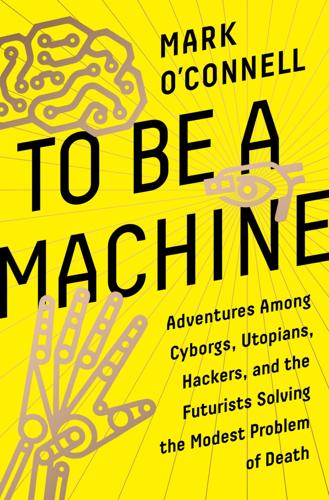
To Be a Machine: Adventures Among Cyborgs, Utopians, Hackers, and the Futurists Solving the Modest Problem of Death
by
Mark O'Connell
Published 28 Feb 2017
At some point, you become aware that you are no longer present in your body. You observe—with sadness, or horror, or detached curiosity—the diminishing spasms of that body on the operating table, the last useless convulsions of a discontinued meat. The animal life is over now. The machine life has begun. This, more or less, is the scenario outlined by Hans Moravec, a professor of cognitive robotics at Carnegie Mellon, in his book Mind Children: The Future of Robot and Human Intelligence. It is Moravec’s conviction that the future of the human species will involve a mass-scale desertion of our biological bodies, effected by procedures of this kind. It’s a belief shared by many transhumanists.
…
I fancied that I detected something like ambivalence in Pepper’s impassive gaze; but she raised her arms and I bent toward her, and suffered her to enfold me in her unnatural clasp. It was, frankly, an underwhelming experience; I felt that we were both, in our own ways, phoning it in. I patted her on the back, lightly and perhaps a little passive-aggressively, and we went our separate ways. — Hans Moravec (the Carnegie Mellon robotics professor who outlined a speculative procedure for transferring the material of human brains to machines) projects a future in which, “by performing better and cheaper, the robots will displace humans from essential roles.” Soon after that, he writes, “they could displace us from existence.”
…
DARPA’s previous director, Regina Dugan, for instance, had left her government job to work at Google’s headquarters in Mountain View, where she now leads something called the Advanced Technology and Projects Team. For a while now, I had been fascinated by the creatures produced by this robotics firm, founded in the early 1990s by Marc Raibert (a former colleague of Hans Moravec at Carnegie Mellon’s Robotics Institute). Over the last couple of years, I had repeatedly and compulsively watched the succession of YouTube videos released by the company, containing footage of their latest ingenious automata. And I found something subtly unsettling in these robots, in their simultaneous remoteness from and proximity to recognizable forms of biological life.

Driverless: Intelligent Cars and the Road Ahead
by
Hod Lipson
and
Melba Kurman
Published 22 Sep 2016
Ironically, advanced disaster response robots—even masterfully designed robots such as CHIMP—unwittingly demonstrate one of the great challenges of artificial-intelligence research: it’s easier to teach a computer to play chess at the Grand Master level than to teach a robot to pick through a pile of rubble. Roboticist Hans Moravec succinctly summed up the challenge of automating seemingly simple tasks in what would come to be known as Moravec’s paradox. Moravec observed that “it is comparatively easy to make computers exhibit adult-level performance on intelligence tests or playing checkers, and difficult or impossible to give them the skills of a one-year-old when it comes to perception and mobility.”2 Moravec’s paradox illuminates a long-standing breach between AI researchers and roboticists.
…
To drive safely on public streets and roads, driverless cars require more than just automotive controls. They also need an intelligent operating system that can visually understand the environment and know how to react appropriately. Notes 1. “Car Balk,” updated from the archive, Snopes.com, October 14, 2010, www.snopes.com/humor/jokes/autos.asp 2. Hans Moravec, Mind Children: The Future of Robot and Human Intelligence (Cambridge, Mass.: Harvard University Press, 1988), p. 15. 3. Ferris Jabr, “How Humans Ended Up with Freakishly Huge Brains,” Wired, November 28, 2015, http://www.wired.com/2015/11/how-humans-ended-up-with-freakishly-huge-brains/ 4. B.
…
Richards, “Sustaining the Exponential Growth of Embedded Digital Signal Processing Capability,” ADM001742, HPEC-7, vol. 1, Proceedings of the Eighth Annual High Performance Embedded, Computing (HPEC) Workshops, September 28–30, 2004,https://www.ll.mit.edu/HPEC/agendas/proc04/abstracts/shaw_gary.pdf 8. Hans Moravec, “When Will Computer Hardware Match the Human Brain?” Journal of Evolution and Technology 1 (1998), http://www.transhumanist.com/volume1/moravec.htm Index A* algorithm, 82 Actuators, 47, 191–192 Adoption timeline, 18–21 Adult recreation, 275, 276 AI winters, 207, 208 AlexNet. See Deep learning Artificial intelligence Data-driven AI.
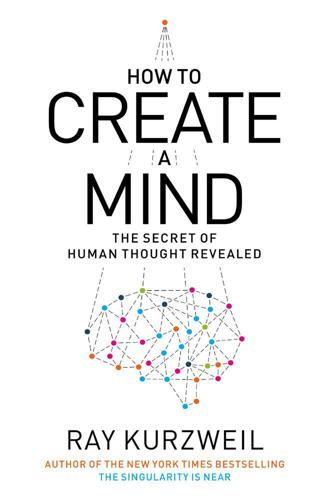
How to Create a Mind: The Secret of Human Thought Revealed
by
Ray Kurzweil
Published 13 Nov 2012
Using my estimate of 3 × 108 (300 million) pattern recognizers, we get about 1014 (100 trillion) calculations per second, a figure that is consistent with my estimate in The Singularity Is Near. In that book I projected that to functionally simulate the brain would require between 1014 and 1016 calculations per second (cps) and used 1016 cps to be conservative. AI expert Hans Moravec’s estimate, based on extrapolating the computational requirement of the early (initial) visual processing across the entire brain, is 1014 cps, which matches my own assessment here. Routine desktop machines can reach 1010 cps, although this level of performance can be significantly amplified by using cloud resources.
…
By the time the arguments about the validity of a computer passing the Turing test do settle down, computers will have long since surpassed unenhanced human intelligence. My emphasis here is on the word “unenhanced,” because enhancement is precisely the reason that we are creating these “mind children,” as Hans Moravec calls them.11 Combining human-level pattern recognition with the inherent speed and accuracy of computers will result in very powerful abilities. But this is not an alien invasion of intelligent machines from Mars—we are creating these tools to make ourselves smarter. I believe that most observers will agree with me that this is what is unique about the human species: We build these tools to extend our own reach.
…
Kurzweil, The Singularity Is Near, chapter 9, section titled “The Criticism from Ontology: Can a Computer Be Conscious?” (pp. 458–69). 10. Michael Denton, “Organism and Machine: The Flawed Analogy,” in Are We Spiritual Machines? Ray Kurzweil vs. the Critics of Strong AI (Seattle: Discovery Institute, 2002). 11. Hans Moravec, Mind Children (Cambridge, MA: Harvard University Press, 1988). Epilogue 1. “In U.S., Optimism about Future for Youth Reaches All-Time Low,” Gallup Politics, May 2, 2011, http://www.gallup.com/poll/147350/optimism-future-youth-reaches-time-low.aspx. 2. James C. Riley, Rising Life Expectancy: A Global History (Cambridge: Cambridge University Press, 2001). 3.

Physics of the Future: How Science Will Shape Human Destiny and Our Daily Lives by the Year 2100
by
Michio Kaku
Published 15 Mar 2011
Glenn McGee, author of The Perfect Baby James McLurkin, former scientist at MIT AI Laboratory, Rice University Paul McMillan, director, Spacewatch, University of Arizona Fulvio Melia, professor of physics and astronomy, University of Arizona William Meller, author of Evolution Rx Paul Meltzer, National Institutes of Health Marvin Minsky, MIT, author of The Society of Mind Hans Moravec, research professor at Carnegie Mellon University, author of Robot the late Phillip Morrison, physicist, MIT Richard Muller, astrophysicist, University of California at Berkeley David Nahamoo, formerly with IBM Human Language Technology Christina Neal, volcanist, Alaska Volcano Observatory, U.S.
…
We have learned the truth of these “obvious” statements by experience, not because they were programmed into our memories. The problem with the top-down approach is that there are simply too many lines of code for common sense necessary to mimic human thought. Hundreds of millions of lines of code, for example, are necessary to describe the laws of common sense that a six-year-old child knows. Hans Moravec, former director of the AI laboratory at Carnegie Mellon, laments, “To this day, AI programs exhibit no shred of common sense—a medical diagnosis program, for instance, may prescribe an antibiotic when presented a broken bicycle because it lacks a model of people, disease, or bicycles.” Some scientists, however, cling to the belief that the only obstacle to mastering common sense is brute force.
…
Douglas Hofstadter confided to me that this might be the natural order of things, but we should treat these superintelligent robots as we do our children, because that is what they are, in some sense. If we can care for our children, he said to me, then why can’t we also care about intelligent robots, which are also our children? Hans Moravec contemplates how we may feel being left in the dust by our robots: “… life may seem pointless if we are fated to spend it staring stupidly at our ultraintelligent progeny as they try to describe their ever more spectacular discoveries in baby talk that we can understand.” When we finally hit the fateful day when robots are smarter than us, not only will we no longer be the most intelligent being on earth, but our creations may make copies of themselves that are even smarter than they are.

Deep Thinking: Where Machine Intelligence Ends and Human Creativity Begins
by
Garry Kasparov
Published 1 May 2017
Despite centuries of science fiction about automatons that look and move like people, and for all the physical labor today done by robots, it’s fair to say that we have advanced further in duplicating human thought than human movement. In what artificial intelligence and robotics experts call Moravec’s paradox, in chess, as in so many things, what machines are good at is where humans are weak, and vice versa. In 1988, the roboticist Hans Moravec wrote, “It is comparatively easy to make computers exhibit adult level performance on intelligence tests or playing checkers, and difficult or impossible to give them the skills of a one-year-old when it comes to perception and mobility.” I wasn’t aware of these theories at the time, and in 1988 it was safe to include checkers but not yet chess, but ten years later it was obviously the case in chess as well.
…
In recent years, many experts have had the patience to personally contribute to my education in artificial intelligence and robotics. Nick Bostrom and his colleagues at Oxford Martin’s Future of Humanity Institute; Andrew McAfee at MIT; Noel Sharkey at the University of Sheffield; Nigel Crook at Oxford Brookes University; David Ferrucci at Bridgewater. I’ve never met Douglas Hofstadter or Hans Moravec, but their writings on human and machine cognition are especially provocative and essential. Special thanks to: My agent at the Gernert Company, Chris Parris-Lamb, and my editor at PublicAffairs, Ben Adams. They have shown impressive resilience in adjusting deadlines to accommodate a chessplayer’s eternal love of time trouble.
…
Mig Greengard has been Garry Kasparov’s spokesman and adviser since 1998. Their collaboration spans hundreds of articles, speeches, and the books How Life Imitates Chess and Winter Is Coming. He lives in Brooklyn. NOTES INTRODUCTION “It is comparatively easy to make computers exhibit adult level performance.” Hans Moravec, Mind Children (Cambridge, MA: Harvard University Press, 1988). Deep Blue matches beyond what was publicly known. A notable exception was the 2003 documentary film about the match, Game Over: Kasparov and the Machine. But while it succeeded in reflecting my perspective it was content to leave much to conjecture.

An Optimist's Tour of the Future
by
Mark Stevenson
Published 4 Dec 2010
Now, as great achievements go, you may think this is hardly up there with Einstein’s Theory of Relativity, the Clavinet riff in ‘Superstition’ or indeed that masterful goal by Pelé in the 1958 World Cup Final against Sweden, but what Leo has just done has some startling, possibly world-changing implications. Leo, you see, is a robot – and he’s just done something robots aren’t supposed to be able to do. Think. Or at least convince you that they’re thinking. In a 2008 article for Scientific American, Hans Moravec, research professor at the Robotics Institute of Carnegie Mellon University reminded us that robotics had failed to live up to the predictions of the 1950s: ‘Within a decade or two, [computer scientists] believed robots would be cleaning our floors, mowing our lawns and, in general, eliminating the drudgery from our lives.’
…
This was a marked contrast to previous attempts at robot locomotion that relied on robots trying to build internal ‘mental maps’ of their surroundings and referring to these internal representations, rather than directly to the world. Time and again these ‘symbolic’ models couldn’t keep up with an ever-changing world. Brooks recalls how strong shadows had foxed Hans Moravec’s attempts to achieve autonomous motion in an MIT robot called the Cart. ‘The Cart got very confused about its model of the world, and Hans had to run out and fix the world occasionally so that the internal model was a little more accurate – it was easier to change the real world than to change the Cart’s internal model of that world.’
…
If someone showed me a really intricate clock or computer that had emotions and self-awareness and spirituality and so forth I’d be very, very impressed, and I think that’s where we are heading, where we can be impressed by the mechanism.’ One thing is certain. If a conscious humanlike intelligence is ‘computable’ by a machine, the processing power to compute it will be within reach of the desktop very soon. Hans Moravec wondered ‘what processing rate would be necessary to yield performance on par with the human brain?’ and came up with the gargantuan figure of one hundred trillion instructions per second.* To put this number in context, as I was ushered into the world in the early seventies, IBM introduced a computer that could perform one million instructions per second.

Human Compatible: Artificial Intelligence and the Problem of Control
by
Stuart Russell
Published 7 Oct 2019
For more discussion on these issues, see Eliezer Yudkowsky, “Intelligence explosion microeconomics,” technical report 2013-1, Machine Intelligence Research Institute, 2013. 14. For a view of AI in which humans become irrelevant, see Hans Moravec, Mind Children: The Future of Robot and Human Intelligence (Harvard University Press, 1988). See also Hans Moravec, Robot: Mere Machine to Transcendent Mind (Oxford University Press, 2000). CHAPTER 6 1. A serious publication provides a serious review of Bostrom’s Superintelligence: Paths, Dangers, Strategies: “Clever cogs,” Economist, August 9, 2014. 2.
…
It is often accompanied by the idea that AI systems that are more intelligent than us somehow deserve to inherit the planet, leaving humans to go gentle into that good night, comforted by the thought that our brilliant electronic progeny are busy pursuing their objectives. This view was promulgated by the roboticist and futurist Hans Moravec,14 who writes, “The immensities of cyberspace will be teeming with unhuman superminds, engaged in affairs that are to human concerns as ours are to those of bacteria.” This seems to be a mistake. Value, for humans, is defined primarily by conscious human experience. If there are no humans and no other conscious entities whose subjective experience matters to us, there is nothing of value occurring. 6 THE NOT-SO-GREAT AI DEBATE The implications of introducing a second intelligent species onto Earth are far-reaching enough to deserve hard thinking.”1 So ended The Economist magazine’s review of Nick Bostrom’s Superintelligence.

A World Without Work: Technology, Automation, and How We Should Respond
by
Daniel Susskind
Published 14 Jan 2020
But it was also because low-paid work often required manual skills that were hard to automate. Computer scientists were already familiar with this finding: many of the basic things we do with our hands are the most difficult tasks for a machine to do. (This is known as “Moravec’s Paradox,” after Hans Moravec, a futurist and inventor who was one of the first to note it down.27) When human beings perform tasks like cooking a meal or trimming a shrub, they tend to perform them unconsciously and instinctively, without deliberate thought. Therefore, while people might find these tasks simple to do, they may also find it very difficult to explain how to do them.
…
Wassily Leontief wrote, back in 1983, how “any worker who now performs his task by following specific instructions can, in principle, be replaced by a machine.” See Leontief, “National Perspective,” p. 3. Leontief, though, was quite a bit more pessimistic about the future than Autor. 26. Goos and Manning in “Lousy and Lovely Jobs” were perhaps the first to put the ALM hypothesis to use in this way. 27. Hans Moravec, Mind Children (Cambridge, MA: Harvard University Press, 1988). 28. The origins of this quotation are contested. The earliest recorded version of it comes from the Nobel Prize–winning economist Paul Samuelson, but Samuelson himself later attributed it to Keynes. See http://quoteinvestigator.com/2011/07/22/keynes-change-mind/. 29.
…
See also ALM hypothesis libraries lidar life skills limitations, defining LinkedIn Literary Creative Turing Tests loan agreement review location, task encroachment and Loew, Judah Logic Theorist loopholes Lowrey, Annie loyalty Ludd, Ned Luddites lump of labor fallacy magicians manual capabilities manufacturing manure Marienthal study Marshall, Alfred Marx, Karl massive open online courses (MOOC) mass media, leisure and McCarthy, John Meade, James meaning creation of leisure and relationship of work with work with work without medicine Big Tech and changing-pie effect and task encroachment and membership requirements, conditional basic income and meritocracy Merlin Metcalfe’s Law Microsoft Mill, John Stuart minimum wage minorities Minsky, Marvin models, overview of Mokyr, Joel Möller, Anton monopolies MOOC. See massive open online courses Moravec, Hans Moravec’s Paradox Moretti, Enrico Murnane, Richard. See also ALM hypothesis music composition Musk, Elon Nadella, Satya narrow intelligence, artificial National Endowment for the Arts National Health Service nationalization Native Americans natural selection navigation systems network effects Newell, Allen Newton, Isaac Ng, Andrew Nilsson, Nils non-routine tasks Norway Obama, Barack Occupy Movement O’Connor, Sarah Odysseus OECD (Organisation for Economic Cooperation and Development) offshore tax havens O’Grady, Frances Old Testament Omidyar, Pierre omitted variable bias On Assistance to the Poor (Vives) “The One Percent” online education On the Origin of Species (Darwin) opacity opium of the people ornithology Orwell, George Osborne, Michael oversight, political ownership Paine, Thomas Paley, William Palro (humanoid) paper clip analogy “Parable of Horseshit” parametric design Paro (therapeutic baby seal) participation rate partnerships pay pension systems Pepper (humanoid robot) personal computer (PC) personalized learning systems PhotoMath PIAAC.
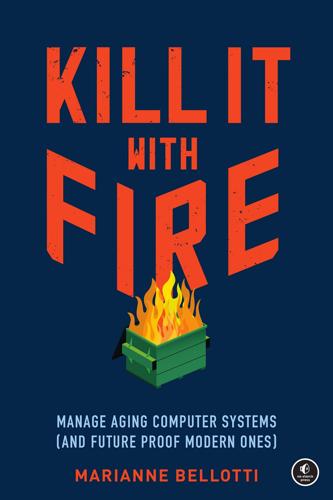
Kill It With Fire: Manage Aging Computer Systems
by
Marianne Bellotti
Published 17 Mar 2021
Engineering teams do their best to mitigate potential problems, but they will never be able to foresee every possible combination of events. For that reason, whether a service works at its initial scale and then continues to work as it grows is always a mix of skill and luck. Easy and Also Impossible In 1988, computer scientist Hans Moravec observed that it was really hard to teach computers to do very basic things, but it was much easier to program computers to do seemingly complex things. Skills that had been evolving for thousands of years to solve problems like walking, answering questions, and identifying objects were intuitive, subconscious, and impossibly difficult to teach a computer how to do.
…
Individual contributors often find the barrier to following that advice is not convincing themselves, but convincing others. Particularly when the organization is big, the pressure to run projects the same way everyone else does, so that they look correct even at the expense of being successful, is significant. In later chapters, we’ll tackle navigating the organization and strategies to advance your goals. 1. Hans Moravec, Mind Children: The Future of Robot and Human Intelligence (Cambridge, MA: Harvard University Press, 1988), 15. 2. “Matt Cutts on the US Digital Service and Working at Google for 17 Years,” Y Combinator, December 4, 2019, https://blog.ycombinator.com/matt-cutts-on-the-us-digital-service-and-working-at-google-for-17-years/. 3.

What to Think About Machines That Think: Today's Leading Thinkers on the Age of Machine Intelligence
by
John Brockman
Published 5 Oct 2015
The cognitive linguist George Lakoff taught us that we can find clues to the body-centrism of thinking in metaphors: We counsel one another not to “look back” in anger because, based on our bias to walk in the direction of our forward-facing eyes, past events tend to literally be behind us. So in order for machines to think, they must act. And in order to act they must have bodies to connect physical and abstract reasoning. But what if machines don’t have bodies like ours? Consider Hans Moravec’s hypothetical Bush Robot: Picture a shrub in which each branch is an arm and each twig is a finger. This robot’s fractal nature would allow it to manipulate thousands or millions of objects simultaneously. How might such a robot differ in its thinking about manipulating people, compared with the way people think about manipulating people?
…
After all, the dominant narrative has been one in which humans isolate their own capacities in order to have them better realized by machines, which function in the first instance as tools but preferably, and increasingly, as automata. Seen in these terms, not to give automated machines some measure of respect, if not rights, is tantamount to disowning one’s children—“mind children,” as the visionary roboticist Hans Moravec called them a quarter century ago. The only real difference is the crucible of creation: a womb versus a factory. But any intuitively strong distinction between biology and technology is bound to fade as humans become more adept at designing their babies, especially outside the womb. At that point, we’ll be in a position to overcome our organicist prejudices, an injustice that runs deeper than Peter Singer’s species-ism.
…
Building thinking machines will show us that there was a deep evolutionary wisdom in our social instincts: In the long run, it pays much more to be unselfish. It’s not truly selfish for you to be selfish, since being unselfish leads to better results for you. The strategic lesson we’ll have to teach machines is all about love. Robot scientist Hans Moravec has described different biological and technological systems according to their ability to process and store information. At one end: simple, rule-based, and stereotypical creatures, like viruses, worms, and computers. At the other: the truly powerful information processors, like whales, elephants, and human beings.

Our Final Invention: Artificial Intelligence and the End of the Human Era
by
James Barrat
Published 30 Sep 2013
My point is this: since the day John McCarthy gave the science of machine intelligence a name, researchers have been developing AI with alacrity and force, and it’s getting smarter, faster, and more powerful all the time. AI’s success in domains like chess, physics, and natural language processing raises a second important observation. Hard things are easy, and easy things are hard. This axiom is known as Moravec’s Paradox, because AI and robotics pioneer Hans Moravec expressed it best in his robotics classic, Mind Children: “It is comparatively easy to make computers exhibit adult level performance on intelligence tests or playing checkers, and difficult or impossible to give them the skills of a one-year-old when it comes to perception and mobility.” Puzzles so difficult that we can’t help but make mistakes, like playing Jeopardy!
…
LIDA (Learning Intelligent Distributed Agent) Lifeboat Foundation Lipson, Hod Loebner, Hugh Lynn, William J., III Machine Intelligence Research Institute (MIRI) Singularity Summit machine learning Madoff, Bernie malware Mazzafro, Joe McCarthy, John McGurk, Sean military battlefield robots and drones DARPA, see DARPA energy infrastructure and nuclear weapons, see nuclear weapons Mind Children (Moravec) Minsky, Marvin Mitchell, Tom mobile phones see also iPhone Monster Cat Moore, Gordon Moore’s Law morality see also Friendly AI Moravec, Hans Moravec’s Paradox mortality, see immortality mortgage crisis Mutually Assured Destruction (MAD) nano assemblers nanotechnology “gray goo” problem and natural language processing (NLP) natural selection Nekomata (Monster Cat) NELL (Never-Ending-Language-Learning system) neural networks neurons New Scientist New York Times Newman, Max Newton, Isaac Ng, Andrew 9/11 attacks Normal Accidents: Living with High-Risk Technologies (Perrow) normalcy bias North Korea Norvig, Peter Novamente nuclear fission nuclear power plant disasters nuclear weapons of Iran Numenta Ohana, Steve Olympic Games (cyberwar campaign) Omohundro, Stephen OpenCog Otellini, Paul Page, Larry paper clip maximizer scenario parallel processing pattern recognition Pendleton, Leslie Perceptron Perrow, Charles Piaget, Jean power grid Precautionary Principle programming bad evolutionary genetic ordinary self-improving, see self-improvement Rackspace rational agent theory of economics recombinant DNA Reflections on Artificial Intelligence (Whitby) resource acquisition risks of artificial intelligence apoptotic systems and Asilomar Guidelines and Busy Child scenario and, see Busy Child scenario defenses against lack of dialogue about malicious AI Precautionary Principle and runaway AI Safe-AI Scaffolding Approach and Stuxnet and unintended consequences robots, robotics Asimov’s Three Laws of in dangerous and service jobs in sportswriting Rosenblatt, Frank Rowling, J.
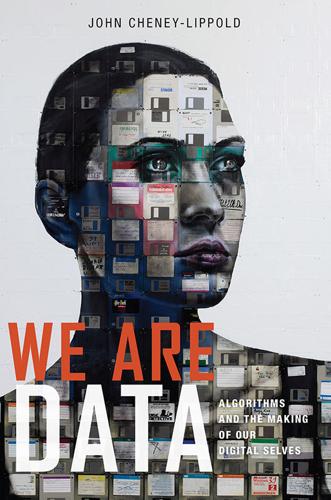
We Are Data: Algorithms and the Making of Our Digital Selves
by
John Cheney-Lippold
Published 1 May 2017
The technological singularity, a hypothesis that linear technological progress will overtake the capacities of the human mind and body, has already produced more than its share of high-tech futurist fantasies.24 One response to these fantasies is authored by literary critic N. Katherine Hayles and her acclaimed book How We Became Posthuman, particularly her reaction to the first time she encountered futurist Hans Moravec’s Mind Children: The Future of Robots and Human Intelligence.25 Hayles was shocked to read Moravec’s proposal of a transferable, emigrating human consciousness. Envision a world where we can actually survive within a computer, leaving our bodies behind as we upload our consciousness onto a server to exist forever, so long as that server remains plugged in.
…
Moor, Johnny H. Søraker, and Eric Steinhart, eds., Singularity Hypotheses: A Scientific and Philosophical Assessment (Berlin: Springer-Verlag, 2012). 25. N. Katherine Hayles, How We Became Posthuman: Virtual Bodies in Cybernetics, Literature, and Informatics (Chicago: University of Chicago Press, 1999); Hans Moravec, Mind Children: The Future of Robot and Human Intelligence (Cambridge, MA: Harvard University Press, 1990). 26. Nick Bostrom, “How Long before Superintelligence,” Linguistic and Philosophical Investigations 5, no. 1 (2006): 11–30. Index Bold page numbers refer to figures 9/11, 40 *999 system, 201, 203–5, 207, 215–16, 218, 224, 227, 232–33, 242–44, 296n2 advertising, xii, 99, 113, 129, 132, 139, 153, 180, 244, 281n101; companies, 19, 21, 92; contextual, 223; identity construction, 6–7; targeted, 28, 75–76, 123, 133, 255.

I Am a Strange Loop
by
Douglas R. Hofstadter
Published 21 Feb 2011
That first tiny glimmer of self was the germ of consciousness and “I”-ness, but there is still a great mystery. No matter how complicated and sophisticated brains became, they always remained, at bottom, nothing but a set of cells that “squirted chemicals” back and forth among each other (to borrow a phrase from the pioneering roboticist and provocative writer Hans Moravec), a bit like a huge oil refinery in which liquids are endlessly pumped around from one tank to another. How could a system of pumping liquids ever house a locus of upside-down causality, where meanings seem to matter infinitely more than physical objects and their motions? How could joy, sadness, a love for impressionist painting, and an impish sense of humor inhabit such a cold, inanimate system?
…
It’s not as if somebody had devised a grand plan, millions of years in advance, that high-level meaningful structures — physical patterns representing abstract categories — would one day come to inhabit big fancy brains; rather, such patterns (the “symbols” of this book) simply came along as an unplanned by-product of the tremendously effective way that having bigger and bigger brains helped beings to survive better and better in a terribly cutthroat world. Just as Bertrand Russell was blindsided by the unexpected appearance of high-level Gödelian meanings in the heart of his ultraprotected bastion, Principia Mathematica, so someone who had never conceived of looking at a brain at any level other than that of Hans Moravec’s squirting chemicals would be mightily surprised at the emergence of symbols. Much as Gödel saw the great potential of shifting attention to a wholly different level of PM strings, so I am suggesting (though I’m certainly far from the first) that we have to shift our attention to a far higher level of brain activity in order to find symbols, concepts, meanings, desires, and, ultimately, our selves.
…
Page 189 I was most impressed when I read about “Stanley”, a robot vehicle… See [Davis 2006]. Page 193 just a big spongy bulb of inanimate molecules… I suppose almost any book on the brain will convince one of this, but [Penfield and Roberts] did it to me as a teen-ager. Page 194 pioneering roboticist and provocative writer Hans Moravec… For some of Moravec’s more provocative speculations about the near-term future of humanity, see [Moravec]. Page 194 from the organic chemistry of carbon… See Chapter 22 in [Hofstadter and Dennett], in which John Searle talks about “the right stuff”, which underwrites what he terms “the semantic causal powers of the brain”, a rather nice-sounding but murky term by which Searle means that when a human brain, such as his own or, say, that of poet Dylan Thomas, makes its owner come out with words, those words don’t just seem to stand for something, they really do stand for something.

In Our Own Image: Savior or Destroyer? The History and Future of Artificial Intelligence
by
George Zarkadakis
Published 7 Mar 2016
Computers may be becoming increasingly more powerful in terms of calculations per second,29 and able to perform tasks demanding increasingly intricate levels of knowledge, but they are still a long way from doing what a human baby can do without even thinking. When was the last time you saw a computer giggle at a funny face? The Moravec paradox The inability of computers to perform basic human functions has been succinctly defined by AI researcher Hans Moravec as a paradox. He writes: ‘… it is comparatively easy to make computers exhibit adult level performance on intelligence test or playing checkers, and difficult or impossible to give them the skills of a one-year-old when it comes to perception and mobility’.30 Although computational methods can reproduce high-level reasoning – as demonstrated in the case of expert systems – research in robotics has shown that sensorimotor skills remain a huge challenge.
…
AD 50: Hero of Alexandria designs first mechanical automata. 1275: Ramon Lull invents Ars Magna, a logical machine. 1637: Descartes declares cogito ergo sum (‘I think therefore I am’). 1642: Blaise Pascal invents the Pascaline, a mechanical cal-culator. 1726: Jonathan Swift publishes Gulliver’s Travels, which includes the description of a machine that can write any book. 1801: Joseph Marie Jacquard invents a textiles loom that uses punched cards. 1811: Luddite movement in Great Britain against the auto-mation of manual jobs. 1818: Mary Shelley publishes Frankenstein. 1835: Joseph Henry invents the electronic relay that allows electrical automation and switching. 1842: Charles Babbage lectures at the University of Turin, where he describes the Analytical Engine. 1843: Ada Lovelace writes the first computer program. 1847: George Boole invents symbolic and binary logic. 1876: Alexander Graham Bell invents the telephone. 1879: Thomas Edison invents the light bulb. 1879: Gottlob Frege invents predicate logic and calculus. 1910: Bertrand Russell and Alfred North Whitehead publish Principia Mathematica. 1917: Karel Capek coins the term ‘robot’ in his play R.U.R. 1921: Ludwig Wittgenstein publishes Tractatus Logico-philosopicus. 1931: Kurt Gödel publishes The Incompleteness Theorem. 1937: Alan Turing invents the ‘Turing machine’. 1938: Claude Shannon demonstrates that symbolic logic can be implemented using electronic relays. 1941: Konrad Zuse constructs Z3, the first Turing-complete computer. 1942: Alan Turing and Claude Shannon work together at Bell Labs. 1943: Warren McCulloch and Walter Pitts demonstrate the equivalence between electronics and neurons. 1943: IBM funds the construction of Harvard Mark 1, the first program-controlled calculator. 1943: Charles Wynn-Williams and others create the computer Colossus at Bletchley Park. 1945: John von Neumann suggests a computer architecture whereby programs are stored in the memory. 1946: ENIAC, the first electronic general-purpose computer, is built. 1947: Invention of the transistor at Bell Labs. 1948: Norbert Wiener publishes Cybernetics. 1950: Alan Turing proposes the ‘Turing Test’. 1950: Isaac Asimov publishes I, Robot. 1952: Alan Turing commits suicide with cyanide-laced apple. 1952: Herman Carr produces the first one-dimensional MRI image. 1953: Claude Shannon hires Marvin Minsky and John McCarthy at Bell Labs. 1953: Ludwig Wittgenstein’s Philosophical Investigations pub-lished in German (two years after his death). 1956: The Dartmouth conference; the term ‘Artificial Intel-ligence’ is coined by John McCarthy. 1957: Allen Newell and Herbert Simon build the ‘General Problem Solver’. 1958: John McCarthy creates LISP programming language. 1959: John McCarthy and Marvin Minsky establish AI lab at MIT. 1963: The US government awards $2.2 million to AI lab at MIT for machine-aided cognition. 1965: Hubert Dreyfus argues against the possibility of Artificial Intelligence. 1969: Stanley Kubrick introduces HAL in the film 2001: A Space Odyssey. 1971: Leon Chua envisions the memristor. 1972: Alain Colmerauer develops Prolog programming language. 1973: The Lighthill report influences the British government to abandon research in AI. 1976: Hans Moravec builds the ‘Stanford Cart’, the first auto-nomous vehicle. Early 1980s: The Internet is invented. 1982: The 5th Generation Computer Systems Project is launch-ed by Japan. 1982: The film Blade Runner is released, directed by Ridley Scott, based on a short story by Philip K. Dick. 1989: Tim Berners-Lee invents the World Wide Web. 1990: Seiji Ogawa presents the first fMRI machine. 1993: Rodney Brooks and others start the MIT Cog Project, an attempt to build a humanoid robot child in five years. 1997: Deep Blue defeats Garry Kasparov at chess. 2000: Cynthia Breazeal at MIT describes Kismet, a robot with a face that simulates expressions. 2004: DARPA launches the Grand Challenge for autonomous vehicles. 2009: Google builds the self-driving car. 2011: IBM’s Watson wins the TV game show Jeopardy!.
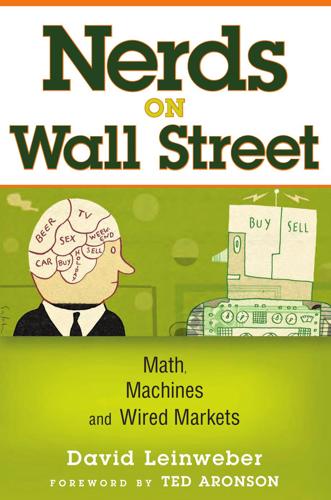
Nerds on Wall Street: Math, Machines and Wired Markets
by
David J. Leinweber
Published 31 Dec 2008
This may even be true for your wristwatch if you have a sufficiently fancy model. There is no need to belabor the analogies about computer progress compared to automobiles and airplanes.3 A novel way of looking at what we have at our disposal for technological innovation in finance is provided by Hans Moravec of the Carnegie Mellon Robotics Institute and author of Mind Children: The Future of Human and Robot Intelligence. He compares artificial and natural “computing machines” by storage capacity and processing speed. The book includes a remarkable chart that shows by his scoring that Deep Blue, the IBM machine that beat world champion Garry Kasparov, is edging up to the monkey zone on the evolutionary ladder.
…
Every year, the hypothetical “car” corresponding to a current computer got more fabulous— traveling at 100,000 miles per hour, getting 100,000 miles per gallon, and the like. Auto industry people felt dissed by all this, and said, “Yes, but it would crash 12 times a day.” It’s tough to mix metaphors. 4. Hans Moravec, Mind Children:The Future of Human and Robot Intelligence (Cambridge, MA: Harvard University Press, 1988). 5. Steve Snider, Fidelity Pyramis quantitative portfolio manager, personal communication. 6. Emanuel Derman, My Life as a Quant: Reflections on Physics and Finance (Hoboken, NJ: John Wiley & Sons, 2007).

The People vs Tech: How the Internet Is Killing Democracy (And How We Save It)
by
Jamie Bartlett
Published 4 Apr 2018
Conversely, a lot of things we do unthinkingly, like picking up a deck of dropped cards or tying shoelaces, are far harder for machines. They are significantly worse than humans at dealing with unpredictable situations, especially ones requiring sensorimotor skills. This is sometimes known as Moravec’s Paradox, after the roboticist Hans Moravec who realised that high-level reasoning often requires little computational power, but low-level sensorimotor skills need a lot.* Not to mention, of course, that humans still win hands-down on breadth and range of intelligence. This has some important ramifications. It means that the jobs most at risk will be those involving the routine tasks that can be most easily be done by machines.
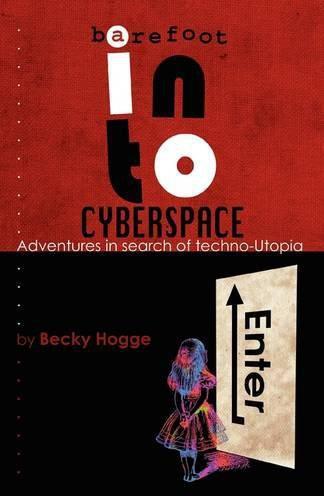
Barefoot Into Cyberspace: Adventures in Search of Techno-Utopia
by
Becky Hogge
,
Damien Morris
and
Christopher Scally
Published 26 Jul 2011
The reference to the Whole Earth Catalog may have been unconscious, but by the time Cory was in his late teens, he was sold on the cyberpunk politics that Brand, Barlow and the rest of them were putting out through the Whole Earth’s new instantiation, the Whole Earth Review. “My friend, Karl Levesque, who I first met at Grindstone, was running an anarchist book store and he would send me magazines that had been returned for credit. And one day he sent me the Whole Earth Review issue called ‘Is the Body Obsolete?’, with William Gibson’s articles and Hans Moravec and all these other people making the connection between cyberculture and counterculture. I must have been 16. This was completely transformational literature for me. Totally changed the way I thought about things.” Techno-Utopianism wasn’t the only legacy Cory took from Grindstone – he also got his first taste of the hypocrisy of the hippy generation.
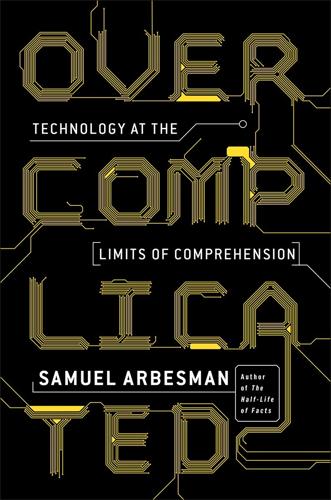
Overcomplicated: Technology at the Limits of Comprehension
by
Samuel Arbesman
Published 18 Jul 2016
And he is quoted as saying the following: “All the computer is is just an extension of me. They’re nothing but wonderfully organized shovels. I wouldn’t give credit to the shovel for digging the hole. Would you?” Blitstein, “Triumph of the Cyborg Composer.” naches is also a framework: The roboticist Hans Moravec has referred to our more powerful descendants as “mind children,” and a similar approach characterizes a short story by the science fiction writer Ted Chiang, in which technologically enhanced humans have long surpassed “regular” humans in their ability to make scientific discoveries. In the end, little to nothing is understood by (nonenhanced) humanity.
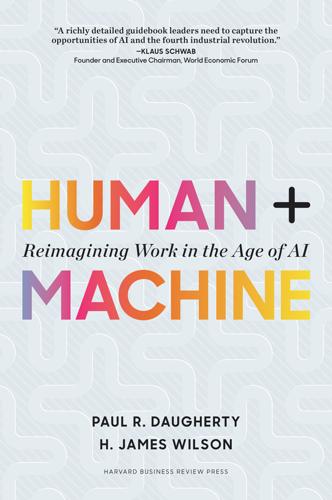
Human + Machine: Reimagining Work in the Age of AI
by
Paul R. Daugherty
and
H. James Wilson
Published 15 Jan 2018
Many other researchers provided relevant findings and insights that enriched our thinking, including Mark Purdy, Ladan Davarzani, Athena Peppes, Philippe Roussiere, Svenja Falk, Raghav Narsalay, Madhu Vazirani, Sybille Berjoan, Mamta Kapur, Renee Byrnes, Tomas Castagnino, Caroline Liu, Lauren Finkelstein, Andrew Cavanaugh, and Nick Yennaco. We owe a special debt to the many visionaries and pioneers who have blazed AI trails and whose work has inspired and informed us, including Herbert Simon, John McCarthy, Marvin Minsky, Arthur Samuel, Edward Feigenbaum, Joseph Weizenbaum, Geoffrey Hinton, Hans Moravec, Peter Norvig, Douglas Hofstadter, Ray Kurzweil, Rodney Brooks, Yann LeCun, and Andrew Ng, among many others. And huge gratitude to our colleagues who provided insights and inspiration, including Nicola Morini Bianzino, Mike Sutcliff, Ellyn Shook, Marc Carrel-Billiard, Narendra Mulani, Dan Elron, Frank Meerkamp, Adam Burden, Mark McDonald, Cyrille Bataller, Sanjeev Vohra, Rumman Chowdhury, Lisa Neuberger-Fernandez, Dadong Wan, Sanjay Podder, and Michael Biltz.

The Technology Trap: Capital, Labor, and Power in the Age of Automation
by
Carl Benedikt Frey
Published 17 Jun 2019
These jobs may not have seen the technological miracles of biotechnology and software production, “but that is where most Americans work and their fates are tied to their ongoing ability to sell their time to those workers who sell exportable goods and services.”22 If Polanyi’s paradox were the only hurdle to automation, most remaining jobs would be for symbolic analysts. A second reason why there are still so many jobs is explained by Moravec’s paradox, named after the computer scientist Hans Moravec. The paradox he noted was the fact that it is hard for computers to do many tasks that are easy for humans, and conversely, computers can do many things that we find exceedingly difficult: “It is comparatively easy to make computers exhibit adult level performance in solving problems on intelligence tests or playing checkers, and difficult or impossible to give them the skills of a one-year-old when it comes to perception and mobility.”23 A computer would have an easy time beating the world chess champion Magnus Carlsen, but it would be unable to clean the chess pieces after the game and put them back in the right place.
…
As AI skeptics like Robert Gordon have pointed out, even if “the car drives up in front of my house, how does the package get from the Amazon car to my front porch? Who carries it up when I’m away from home?”33 At the same time, we have been able to overcome seemingly more complicated engineering problems in the past through clever task redesign. As Hans Moravec has noted, it is hard for computers to do many tasks that are easy for humans, and vice versa. But while this remains true, engineers have also been able to take steps toward resolving Moravec’s paradox (see chapter 9) by making simple tasks even simpler. Indeed, a common misconception is that for a task to be automated, a machine must replicate the exact procedures of the worker it is intended to replace.
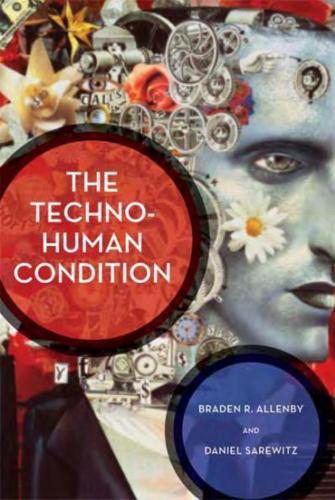
The Techno-Human Condition
by
Braden R. Allenby
and
Daniel R. Sarewitz
Published 15 Feb 2011
National Science Foundation writes, "advances in genetic engineering, information systems, and robotics will allow archived human beings to live again, even in transformed bodies suitable for life on other planets and moons of the solar system.,,6 This remarkable statement exemplifies the tendency among transhumanists to extrapolate from observations about current technology states to breathtaking visions of immortality, spatial transcendence, and social transformation. Among the better-known examples of this tendency are the predictions by technical experts such as Hans Moravec and Ray Kurzweil that, given current accelerating rates of evolution in information and communication technologies, we will be downloading our consciousness into information networks within decades. 7 And yet what calls attention to transhumanism is less the specifics of the agenda and its promiscuous predictions than the legitimacy that the agenda has garnered.

Thinking Machines: The Inside Story of Artificial Intelligence and Our Race to Build the Future
by
Luke Dormehl
Published 10 Aug 2016
As a game, chess consists of clearly defined states, board positions, and legal or illegal moves. It is a static world in which players have access to complete information, just so long as they can see the board and know the moves available to them. Chess may be a part of reality, but reality itself is nothing like chess. Suddenly, researchers like Hans Moravec began to voice startling suggestions like the notion that it is ‘comparatively easy to make computers exhibit adult-level performance on intelligence tests or playing checkers, and difficult or impossible to give them the skills of a one-year-old when it comes to perception and mobility’. This concentration on the more complex aspects of life to the exclusion of more commonplace tasks may have had something to do with the sorts of people working in AI.

Humans Are Underrated: What High Achievers Know That Brilliant Machines Never Will
by
Geoff Colvin
Published 3 Aug 2015
So researchers had a group of human teachers . . . Mark D. Shermis and Ben Hammer, “Contrasting State-of-the-Art Automated Scoring of Essays: An Analysis,” http://www.scoreright.org/NCME_2012_Paper3_29_12.pdf. In 1997 a computer . . . This is known as Moravec’s paradox; see, among many discussions of this topic, Hans Moravec, Mind Children (Harvard University Press, 1988), and Pamela McCorduck, Machines Who Think (A. K. Peters Ltd., 2004). Google’s autonomous cars . . . Jennifer Cheeseman Day and Jeffrey Rosenthal, “Detailed Occupations and Median Earnings: 2008.” U.S. Census Bureau, http://www.census.gov/people/io/files/acs08_detailedoccupations.pdf.

The Economic Singularity: Artificial Intelligence and the Death of Capitalism
by
Calum Chace
Published 17 Jul 2016
In truth it has often been hard to forecast what will be hard for machines to do. It turned out to be relatively easy to programme computers to do things that we find very hard, but very hard to teach them how to do things that we find easy, like tying our shoelaces. This is known as Moravec’s paradox, after AI pioneer Hans Moravec.[lxvii] This episode is also a good illustration of another phenomenon, which is that once a computer is able to perform a particular task better than humans, we dismiss it as simple, saying that the next challenge is the really hard one. Until it isn't. In fact, once a machine is able to perform a particular task, we usually stop calling it artificial intelligence.

But What if We're Wrong? Thinking About the Present as if It Were the Past
by
Chuck Klosterman
Published 6 Jun 2016
The man to whom I refer is existential Swedish philosopher Nick Bostrom, currently directing the Future of Humanity Institute at the University of Oxford. He’s relatively young (born in ’73), balding, and slightly nervous that the human race will be annihilated by robots. Yet it is his simulation hypothesis (building off the earlier work of Austrian roboticist Hans Moravec) that really moves the stoner needle. The premise of his hypothesis started showing up in places like The New York Times around 2007, and it boils down to this: What we believe to be reality is actually a computer simulation, constructed in a future where artificial intelligence is so advanced that those living inside the simulation cannot tell the difference.

Death Glitch: How Techno-Solutionism Fails Us in This Life and Beyond
by
Tamara Kneese
Published 14 Aug 2023
Transhumanism proper is notoriously unfriendly to sexual reproduction in that radical life extension or immortality makes it unnecessary for people to procreate at all. As the media theorist N. Katherine Hayles has described in her critiques of the mind-body dualism often found in transhumanist thought, roboticists like Hans Moravec celebrate the idea of “mind children” over flesh-and-blood progeny. Hayles claims that, when it comes to transhumanism, reproduction is “where the rubber hits the road.”70 Thus, reproduction, of both machines and humans, is a site of tension and possibility within transhumanism. This makes Mormon transhumanism an especially compelling phenomenon.71 The Mormon faith relies on sexual and social reproduction and on attention paid to both ancestors and descendants.
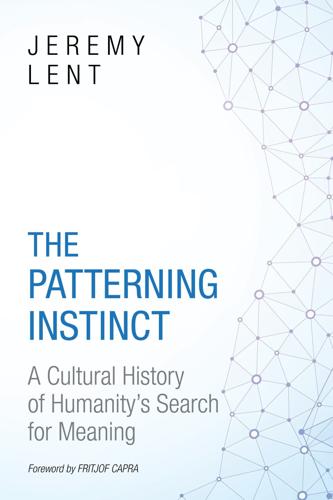
The Patterning Instinct: A Cultural History of Humanity's Search for Meaning
by
Jeremy Lent
Published 22 May 2017
Soon we must look deep within ourselves and decide what we wish to become.”40 Some who have looked within themselves have decided that we should embrace an utterly new phase, as Butler predicted, in the evolutionary story. “Technical civilization, and the human minds that support it,” writes futurist Hans Moravec, “are the first feeble stirrings of a radically new form of existence, one as different from life as life is from simple chemistry…. Intelligent machines, which will grow from us, learn our skills, and initially share our goals and values, will be the children of our minds…. We parents can gracefully retire as our mind children grow beyond our imagining.”41 Not everyone is as willing as Moravec to give carte blanche to machines to inherit our future.
…
Dyson, Darwin among the Machines: The Evolution of Global Intelligence (New York: Basic Books, 1997), 25–26. 40. E. O. Wilson, Consilience: The Unity of Knowledge (New York: Vintage Books, 1999), 302–3. See also Merlin Donald, A Mind So Rare: The Evolution of Human Consciousness (New York: Norton, 2001), 382. 41. Hans Moravec, Robot: Mere Machine to Transcendent Mind (New York Oxford University Press, 1999), 125–26. 42. See Bill McKibben, Enough: Staying Human in an Engineered Age (New York: Owl Books, 2003), 24; Mark Prigg, “Get Ready for the ‘Superbaby’: Chinese Firm's Bid to Allow Parents to Pick Their Smartest Embryos,” Daily Mail, January 14, 2014, http://www.dailymail.co.uk/sciencetech/article-2539596/Get-ready-superbaby-Chinese-firm-set-allow-parents-pick-smartest-embryos.html (accessed June 24, 2016). 43.

Protocol: how control exists after decentralization
by
Alexander R. Galloway
Published 1 Apr 2004
Thus, my study skips direct engagement with the work of Alvin Toffler, Peter Drucker, Daniel Bell, and others who discuss the third phase of capitalist development in social terms. The large mass of literature devoted to artificial intelligence and speculations about the consciousness (or lack thereof ) within man and machine is also largely avoided in this book. Writers like Ray Kurzweil forecast a utopian superfuture dominated by immortal man-machine hybrids. Hans Moravec predicts a similar future, only one less populated by humans who are said to “retire” to the mercy of their ascendant computerized progeny. Marvin Minsky, Daniel Dennett, John Searle, Hubert Dreyfus, and others have also wrestled with the topic of artificial intelligence. But they are not addressed here.
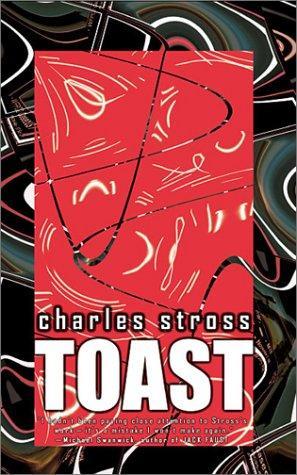
Toast
by
Stross, Charles
Published 1 Jan 2002
The thrust of Vinge’s argument was that if artificial intelligence is possible, then it amounts to a singularity in the history of technological progress; we cannot possibly predict what life will be like on the far side of it, because the limiting factor on our projections is our own minds, and the minds that are driving progress beyond that point will have different limits. Hans Moravec, Professor of Robotics at Carnegie Melon University, holds similar views. In his book “Robot: mere machine to transcendent mind” he provides some benchmark estimates of the computational complexity of a human brain, and some calculations of the point at which sufficient computing power to match it will be achieved.
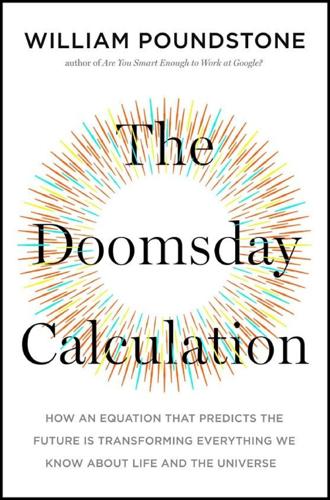
The Doomsday Calculation: How an Equation That Predicts the Future Is Transforming Everything We Know About Life and the Universe
by
William Poundstone
Published 3 Jun 2019
Would he really do such an experiment himself? “I’d be OK,” Tegmark replied, “but my wife, Angelica, would become a widow. Perhaps I’ll do the experiment one day—when I’m old and crazy.” Tegmark found he was not the first to describe a quantum suicide machine. Similar ideas had been independently conceived and published by Hans Moravec and Bruno Marchal. Moravec, a Carnegie Mellon University roboticist, envisioned a helmet supplied with quantum-activated high explosives. If many worlds is true, then the helmet is a thinking cap. You could use the machine to guess anyone’s online passwords. Type in a random password generated by quantum measurements.
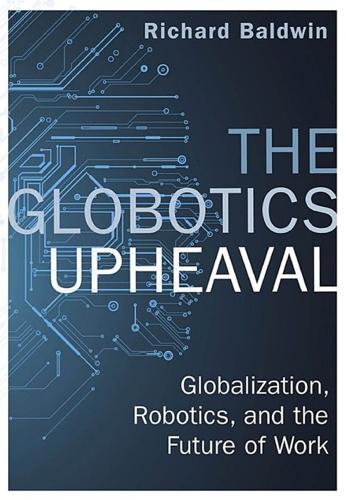
The Globotics Upheaval: Globalisation, Robotics and the Future of Work
by
Richard Baldwin
Published 10 Jan 2019
Computers Shift from Obedience to Cognition Machines recently crossed a second “continental divide.” The first, which came in the 1970s, was from things to thoughts, as we saw. The second is from conscious thought processes to unconscious thought processes. Think of it as the reversal of Moravec’s paradox. AI-pioneer Hans Moravec wrote (in the late stone ages of AI, 1988 to be specific): “It is comparatively easy to make computers exhibit adult level performance on intelligence tests or playing checkers, and difficult or impossible to give them the skills of a one-year-old when it comes to perception and mobility.” That was the paradox; computers were good at what humans found hard, and bad at what humans found easy.
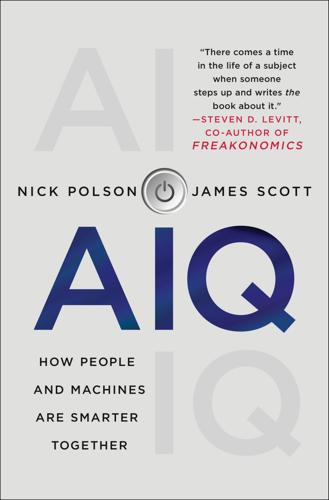
AIQ: How People and Machines Are Smarter Together
by
Nick Polson
and
James Scott
Published 14 May 2018
This also helps avoid overfitting, and it’s really important if you want to fit good prediction rules. We encourage you to read more about overfitting if you’re interested in this area. ‡ This is just for images. There are deep neural-network architectures for all kinds of inputs, from videos to text, and they are all structured differently. * Named after Hans Moravec, a pioneer in robotics. † We’ve rounded off all the numbers here. * You can easily find her Letterman interview on YouTube. † The ordinary decimal numbers 8 and 25 are expressed in octal as 10 and 31, respectively. * https://books.google.com/ngrams. An “n-gram” is a geeky linguistics term for a phrase containing n items, like words or symbols.

AI Superpowers: China, Silicon Valley, and the New World Order
by
Kai-Fu Lee
Published 14 Sep 2018
This is because the intelligent automation of the twenty-first century operates differently than the physical automation of the twentieth century. Put simply, it’s far easier to build AI algorithms than to build intelligent robots. Core to this logic is a tenet of artificial intelligence known as Moravec’s Paradox. Hans Moravec was a professor of mine at Carnegie Mellon University, and his work on artificial intelligence and robotics led him to a fundamental truth about combining the two: contrary to popular assumptions, it is relatively easy for AI to mimic the high-level intellectual or computational abilities of an adult, but it’s far harder to give a robot the perception and sensorimotor skills of a toddler.
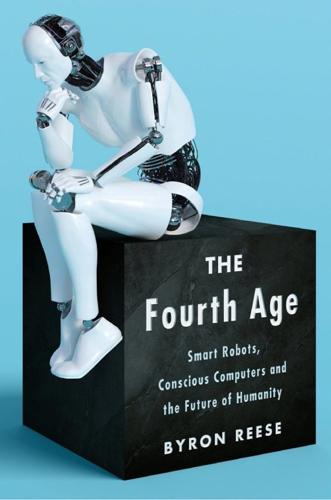
The Fourth Age: Smart Robots, Conscious Computers, and the Future of Humanity
by
Byron Reese
Published 23 Apr 2018
It requires hundreds of skills, from spotting rancid meat to cleaning up baby vomit. But because we take all those things for granted, we don’t think they are all that hard. To a robot, the radiologist job is by comparison a cakewalk. It is just data in, probabilities out. This phenomenon is so well documented that it has a name, the Moravec paradox. Hans Moravec was among those who noted that it is easier to do hard, brainy things with computers than “easy” things. It is easier to get a computer to beat a grandmaster at chess than it is to get one to tell the difference between a photo of a dog and one of a cat. Waiters’ jobs pay less than radiologists’ jobs not because they require fewer skills, but because the skills needed to be a waiter are widely available, whereas comparatively few people have the uncommon ability to interpret CT scans.

Possible Minds: Twenty-Five Ways of Looking at AI
by
John Brockman
Published 19 Feb 2019
The Fifth Generation: Artificial Intelligence and Japan’s Computer Challenge to the World was published in 1983. We had a code name for the project: “It’s coming, it’s coming!” But it didn’t come; it went. From that point on I’ve worked with researchers in nearly every variety of AI and complexity, including Rodney Brooks, Hans Moravec, John Archibald Wheeler, Benoit Mandelbrot, John Henry Holland, Danny Hillis, Freeman Dyson, Chris Langton, J. Doyne Farmer, Geoffrey West, Stuart Russell, and Judea Pearl. AN ONGOING DYNAMICAL EMERGENT SYSTEM From the initial meeting in Washington, Connecticut, to the present, I arranged a number of dinners and discussions in London and Cambridge, Massachusetts, as well as a public event at London’s City Hall.

Wired for War: The Robotics Revolution and Conflict in the 21st Century
by
P. W. Singer
Published 1 Jan 2010
“On Monday you control it, on Tuesday it is doing things you didn’t anticipate, on Wednesday, God only knows. Is it a good thing or a bad thing, who knows? It could end up causing the end of humanity, or it could end war forever.” Finkelstein is hardly the only scientist who talks so directly about robots taking over one day. Hans Moravec, director of the Robotics Institute at Carnegie Mellon University, believes that “the robots will eventually succeed us: humans clearly face extinction.” Eric Drexler, the engineer behind many of the basic concepts of nanotechnology, says that “our machines are evolving faster than we are. Within a few decades they seem likely to surpass us.
…
Marvin Minsky, who cofounded MIT’s artificial intelligence lab, believes that we humans are so bad at writing computer software that it is all but inevitable that the first true AI we create will be “leapingly, screamingly insane.” The refuseniks had concerns that the military might misuse their research. These scientists’ concerns reach a whole new level. Some just accept it as an unavoidable consequence of their research that their creations will one day surpass humans and even order them about. Professor Hans Moravec observes, “Well, yeah, but I’ve decided that’s inevitable and that it’s no different from your children deciding that they don’t need you. So I think that we should gracefully bow out—ha, ha, ha. . . . But I think we can have a pretty stable, self-policing system that supports us, though there would be some machines which were outside the system, which means became wild.

Immortality: The Quest to Live Forever and How It Drives Civilization
by
Stephen Cave
Published 2 Apr 2012
The cryonics institution Alcor Life Extension Foundation at press time has a useful online library of information on the science and philosophy of cryopreserving human beings (www.alcor.org). The book considered to have launched the cryonics movement is Robert C. W. Ettinger’s The Prospect of Immortality (Doubleday, 1964). One leading exponent of mind-uploading is the roboticist and futurist Hans Moravec, for example, in Mind Children: The Future of Robot and Human Intelligence (Harvard University Press, 1988). Ian Pearson’s prediction of mind-uploading by 2050 is taken from an interview with the Observer newspaper, May 22, 2005. Frank Tipler expounds his extraordinary thesis in The Physics of Christianity (Doubleday, 2007) and The Physics of Immortality: Modern Cosmology, God and the Resurrection of the Dead (Doubleday, 1994).

Five Billion Years of Solitude: The Search for Life Among the Stars
by
Lee Billings
Published 2 Oct 2013
Drake’s calculation of how many boxes of corn flakes the Arecibo Observatory radio dish could hold appears on pages 73–74. Von R. Eshleman, “Gravitational Lens of the Sun: Its Potential for Observations and Communications Over Interstellar Distances,” Science, vol. 205 (1979), pp. 1133–35. Paul Gilster, Centauri Dreams: Imagining and Planning Interstellar Exploration (New York: Springer, 2004). Hans Moravec, Mind Children: The Future of Robot and Human Intelligence (Cambridge, MA: Harvard University Press, 1988). Peter D. Ward and Donald Brownlee, Rare Earth: Why Complex Life Is Uncommon in the Universe (New York: Springer, 2000). CHAPTER 3: A Fractured Empire Guillem Anglada-Escudé et al., “A Planetary System around the Nearby M Dwarf GJ 667C with At Least One Super-Earth in its Habitable Zone,” The Astrophysical Journal Letters, vol. 751 (2012), pp.

Beyond: Our Future in Space
by
Chris Impey
Published 12 Apr 2015
The goal of researchers like Kurzweil is simple: immortality. He thinks that medical nanotechnology will conquer disease, aging, and death. To become postbiological, we’ll need the means to reverse engineer the brain of any human and reproduce it in silicon. The term for this is mind uploading. Hans Moravec first outlined the simulation argument in the late 1990s. He projected advances in computation to superhuman capabilities in a few decades. With the premise that the wet electrochemical network of the brain, including consciousness, can be replicated computationally, we’re within striking distance of a computation that’s equivalent to the history of all the thoughts every human has ever had.

Artificial Whiteness
by
Yarden Katz
But what do these narratives consider as “AI,” and how is its significance articulated to invested powers? Daniel Crevier’s history of the field, AI: The Tumultuous History of the Quest for Artificial Intelligence (1993), gives a paradigmatic answer.89 The book is based on interviews with prominent practitioners, two of whom—Patrick Winston and Hans Moravec—reiterate AI’s importance in the Gulf War.90 In Moravec’s telling, even e-mail, which he says was crucial for coordinating U.S. troops, grew out of “AI.” The label’s plasticity also shows when Moravec adds that U.S. military “planning and logistics also owed a lot to AI techniques. I mean simple things like: How do you pack a transport plane?

What the Dormouse Said: How the Sixties Counterculture Shaped the Personal Computer Industry
by
John Markoff
Published 1 Jan 2005
Four years later, he handed the technology to Stanford’s Office of Technology Licensing, which in turn approached a number of American instrument makers. None of them was interested, and it was Yamaha that ultimately licensed Chowning’s invention. SAIL was also home to eccentric hackers who took on any number of curious projects. Hans Moravec was born in Austria shortly before his family immigrated to Canada in 1953. He developed a boyhood passion for robotics that he never outgrew. After getting a master’s degree at the University of Ontario, he came to Stanford with the fantasy of building a robot that could independently make its way through the world.

The AI Economy: Work, Wealth and Welfare in the Robot Age
by
Roger Bootle
Published 4 Sep 2019
Would you believe it, there was even a Hollywood version, called Transcendence, starring Johnny Depp, released in 2014. It is easy to dismiss Kurzweil as a crank. Yet quite a few Silicon Valley billionaires have embraced the idea of the Singularity. And in 2012 Google hired Kurzweil to direct its research into AI. The vision of the roboticist Hans Moravec goes further. He foresees a future in which part of the universe is “rapidly transformed into a cyberspace [wherein beings] establish, extend, and defend identities as patterns of information flow … becoming finally a bubble of Mind expanding at near light speed.”11 Inevitability is a big word When I contemplate the visions of the thinkers quoted above, my reaction is: Gosh!

You've Been Played: How Corporations, Governments, and Schools Use Games to Control Us All
by
Adrian Hon
Published 14 Sep 2022
Henry M. Cowles, “Peak Brain: The Metaphors of Neuroscience,” Los Angeles Review of Books, November 30, 2020, https://lareviewofbooks.org/article/peak-brain-the-metaphors-of-neuroscience. 3. Matthew Cobb, The Idea of the Brain: The Past and Future of Neuroscience (New York: Basic Books, 2020). 4. Hans Moravec, “When Will Computer Hardware Match the Human Brain?” Journal of Evolution and Technology 1 (1998), https://jetpress.org/volume1/moravec.htm. 5. Paul Schuurman, “A Game of Contexts: Prussian-German Professional Wargames and the Leadership Concept of Mission Tactics 1870–1880,” War in History 28, no. 3 (July 2021): 504–524, https://doi.org/10.1177/0968344519855104. 6.

Complexity: A Guided Tour
by
Melanie Mitchell
Published 31 Mar 2009
He worried about public perception of the possibilities of self-reproducing machines, and said that he did not want any mention of the “reproductive potentialities of the machines of the future” made to the mass media. It took a while, but the mass media eventually caught up. In 1999, computer scientists Ray Kurzweil and Hans Moravec celebrated the possibility of super-intelligent self-reproducing robots, which they believe will be built in the near future, in their respective nonfiction (but rather far-fetched) books The Age of Spiritual Machines and Robot. In 2000 some of the possible perils of self-reproducing nano-machines were decried by Bill Joy, one of the founders of Sun Microsystems, in a now famous article in Wired magazine called “Why the Future Doesn’t Need Us.”

The Master Algorithm: How the Quest for the Ultimate Learning Machine Will Remake Our World
by
Pedro Domingos
Published 21 Sep 2015
Computer programs are the fastest replicators on Earth: copying them takes only a fraction of a second. But creating them is slow, if it has to be done by humans. Machine learning removes that bottleneck, leaving a final one: the speed at which humans can absorb change. This too will eventually be removed, but not because we’ll decide to hand things off to our “mind children,” as Hans Moravec calls them, and go gently into the good night. Humans are not a dying twig on the tree of life. On the contrary, we’re about to start branching. In the same way that culture coevolved with larger brains, we will coevolve with our creations. We always have: humans would be physically different if we had not invented fire or spears.

Exponential: How Accelerating Technology Is Leaving Us Behind and What to Do About It
by
Azeem Azhar
Published 6 Sep 2021
Although technologies are improving, many are taking longer than expected to become superhuman. Exponential processes take time to marinate. This slowness is bound up with the fact that much work is harder to automate than you might think. The difficult-to-automate nature of many jobs is captured in a maxim known as ‘Moravec’s paradox’ – first outlined by Hans Moravec, a professor renowned for his work on robotics and AI at Carnegie Mellon University in the 1980s. As he wrote in 1988: ‘It is comparatively easy to make computers exhibit adult level performance on intelligence tests or playing checkers, and difficult or impossible to give them the skills of a one-year-old when it comes to perception and mobility.’22 Over three decades later, Moravec’s paradox still holds.

Arriving Today: From Factory to Front Door -- Why Everything Has Changed About How and What We Buy
by
Christopher Mims
Published 13 Sep 2021
But the thing to know about all predictions about an imminent future of “lights-out” warehouses in which there are no humans at all is that no one knows when or even if that future will arrive. It’s certainly not going to be anytime soon. The problem of reproducing the dexterity of the human hand and the capabilities of the nervous system directing it even has a name among engineers and academics: Moravec’s paradox. Hans Moravec is an adjunct professor at the Robotics Institute at Carnegie Mellon University. Here’s how he described the observation that bears his name in his 1988 book, Mind Children: The Future of Robot and Human Intelligence: “It is comparatively easy to make computers exhibit adult-level performance on intelligence tests or playing checkers, and difficult or impossible to give them the skills of a one-year-old when it comes to perception and mobility.”

New Laws of Robotics: Defending Human Expertise in the Age of AI
by
Frank Pasquale
Published 14 May 2020
See also IEEE, Global Initiative on Ethics of Autonomous and Intelligent Systems, Ethically Aligned Design 39 (1st. ed., 2019), https://standards.ieee.org/content/ieee-standards/en/industry-connections/ec/autonomous-systems.html: “The duty to respect human dignity may require some limitations on the functions and capability of A / IS so that they do not completely replace humans, human functions, and / or ‘human central thinking activities’ such as judgment, discretion, and reasoning.… It may also involve preventing A / IS from deceiving or manipulating humans.” 22. I borrow the term “mind children” from Moravec, even though my vision for the future of robotics is quite different. Hans Moravec, Mind Children: The Future of Robot and Human Intelligence (Cambridge, MA: Harvard University Press, 1990). 23. Even in such cases, a “burden of self-insurance” may be imposed. David C. Vladeck, “Machines without Principals: Liability Rules and Artificial Intelligence,” Washington Law Review 89, no. 1 (2014): 117, 150. 24.

Dawn of the New Everything: Encounters With Reality and Virtual Reality
by
Jaron Lanier
Published 21 Nov 2017
An AI entity is a non-real-time avatar, and that is what allows for the illusion that it isn’t an avatar at all. The people from whom the data was taken are no longer in the room when an AI program is run, so it’s easy to imagine that the AI program is a free-standing personage instead of a reflection of human data, capital, and agency. 16. Roboticist Hans Moravec might have been the originator. 17. I don’t want to try to explain this problem in full because it makes no sense, but if you’re curious, you can look up “Roko’s Basilisk.” 18. Microsoft Research is studying Topological Quantum Computers, but they don’t use black holes, so we’re not at the point of tweaking the shape of the universe just yet.

When Computers Can Think: The Artificial Intelligence Singularity
by
Anthony Berglas
,
William Black
,
Samantha Thalind
,
Max Scratchmann
and
Michelle Estes
Published 28 Feb 2015
The worst-case scenario described above would require each of the 86 billion neurons to be accurately simulated in order to produce intelligence. Ray Kurzweil estimates the raw computing power of the brain using this model at 1017 operations per second, and predicts that that power will be available by about 2029. Hans Moravec analyzed the known processing involved with our visual cortex. He suggested that there will be plenty of ways to optimize the brain functionality and 1014 operations per second should suffice. That is about 100 times faster than a modern multi-core personal computer, ignoring its graphics card.

The Precipice: Existential Risk and the Future of Humanity
by
Toby Ord
Published 24 Mar 2020
The Japanese did not sign it until 1970 but gained information from its existence (Harris, 2002, p. 18). 69 Lewis et al. (2019). 70 For example, I have taken care to use only examples which are sufficiently widely known. 71 McCarthy et al. (1955). AI has some foundations going further back than the Dartmouth conference, but that summer of 1956 is usually considered the beginning of AI as a field of inquiry. 72 This is known as Moravec’s Paradox, after AI and robotics pioneer Hans Moravec, who wrote in 1988: “But as the number of demonstrations has mounted, it has become clear that it is comparatively easy to make computers exhibit adult-level performance in solving problems on intelligence tests or playing checkers, and difficult or impossible to give them the skills of a one-year-old when it comes to perception and mobility.” 73 Major improvements to the structure include convolutional neural networks (CNNs) and recurrent neural networks (RNNs).

Superintelligence: Paths, Dangers, Strategies
by
Nick Bostrom
Published 3 Jun 2014
If he can trace a cause for some weakness he can probably think of the kind of mutation which will improve it.4 We know that blind evolutionary processes can produce human-level general intelligence, since they have already done so at least once. Evolutionary processes with foresight—that is, genetic programs designed and guided by an intelligent human programmer—should be able to achieve a similar outcome with far greater efficiency. This observation has been used by some philosophers and scientists, including David Chalmers and Hans Moravec, to argue that human-level AI is not only theoretically possible but feasible within this century.5 The idea is that we can estimate the relative capabilities of evolution and human engineering to produce intelligence, and find that human engineering is already vastly superior to evolution in some areas and is likely to become superior in the remaining areas before too long.

The Alignment Problem: Machine Learning and Human Values
by
Brian Christian
Published 5 Oct 2020
The meeting was about building autonomous vehicles for DARPA. “That,” recalls Thorpe—that five-minute window—“was my break between finishing my thesis and starting my postdoc.” “Vehicles” that were in some sense “self-driving” had by 1984 already been around for years, but to call the technology primitive would be perhaps too generous. Robotics pioneer Hans Moravec had, in his own PhD thesis at Stanford in 1980, enabled a robotic “cart” the size and shape of a desk on bicycle wheels to move itself around and avoid chairs and other obstacles using an onboard TV camera. “The system is moderately reliable,” Moravec wrote, “but very slow.”36 How slow? The cart was programmed to move one meter at a time—“in lurches,” as Moravec put it.

Architects of Intelligence
by
Martin Ford
Published 16 Nov 2018
MARTIN FORD: Think back to the ‘90s and the time you started iRobot, do you think since then robotics has met or even exceeded your expectations, or has it been disappointing? RODNEY BROOKS: When I came to the United States in 1977, I was really interested in robots and ended up working on computer vision. There were three mobile robots in the world at that point. One of those robots was at Stanford, where Hans Moravec would run experiments to get the robot to move 60 feet across a large room in six hours, another one was at NASA’s Jet Propulsion Laboratory (JPL), and the last was at the Laboratory for Analysis and Architecture of Systems (LAAS) in Toulouse, France. There were three mobile robots in the world. iRobot now ships millions of mobile robots per year, so from the point of view of how far that’s come, I’m pretty happy.

The Innovators: How a Group of Inventors, Hackers, Geniuses and Geeks Created the Digital Revolution
by
Walter Isaacson
Published 6 Oct 2014
A visit to the New York City police command system in Manhattan reveals how computers scan thousands of feeds from surveillance cameras as part of a Domain Awareness System, but the system still cannot reliably identify your mother’s face in a crowd. All of these tasks have one thing in common: even a four-year-old can do them. “The main lesson of thirty-five years of AI research is that the hard problems are easy and the easy problems are hard,” according to Steven Pinker, the Harvard cognitive scientist.12 As the futurist Hans Moravec and others have noted, this paradox stems from the fact that the computational resources needed to recognize a visual or verbal pattern are huge. Moravec’s paradox reinforces von Neumann’s observations from a half century ago about how the carbon-based chemistry of the human brain works differently from the silicon-based binary logic circuits of a computer.

Global Catastrophic Risks
by
Nick Bostrom
and
Milan M. Cirkovic
Published 2 Jul 2008
Since lucky humans will at that point merge with superintelligence or become superintelligent, some refer to the Singularity as the 'Techno-rapture', pointing out the similarity ofthe narrative to the Christian Rapture; those foresighted enough to be early adopters of life extension and cybernetics will live long enough to be uploaded and 'vastened' (given vastly superior mental abilities) after the Singularity. The rest of humanity may however be 'left behind'. This secular 'left behind' narrative is very explicit in the Singularitarian writings of computer scientist Hans Moravec ( 1990, 2000) . For Moravec the human race will be superseded by our robot children, among whom some of us may be able to expand to the stars. In his Robot: Mere Machine to Transcendent Mind, Moravec (2000, pp. 142-162) says 'Our artificial progeny will grow away from and beyond us, both in physical distance and structure, and similarity ofthought and motive.

Artificial Intelligence: A Modern Approach
by
Stuart Russell
and
Peter Norvig
Published 14 Jul 2019
The Web site pessimists.co shows that this has been true throughout history: for example, in the 1890s people were concerned that the elevator would inevitably cause nausea, that the telegraph would lead to loss of privacy and moral corruption, that the subway would release dangerous underground air and disturb the dead, and that the bicycle—especially the idea of a woman riding one—was the work of the devil. Hans Moravec (2000) introduces some of the ideas of transhumanism, and Bostrom (2005) gives an updated history. Good’s ultraintelligent machine idea was foreseen a hundred years earlier in Samuel Butler’s Darwin Among the Machines (1863). Written four years after the publication of Charles Darwin’s On the Origins of Species and at a time when the most sophisticated machines were steam engines, Butler’s article envisioned “the ultimate development of mechanical consciousness” by natural selection.